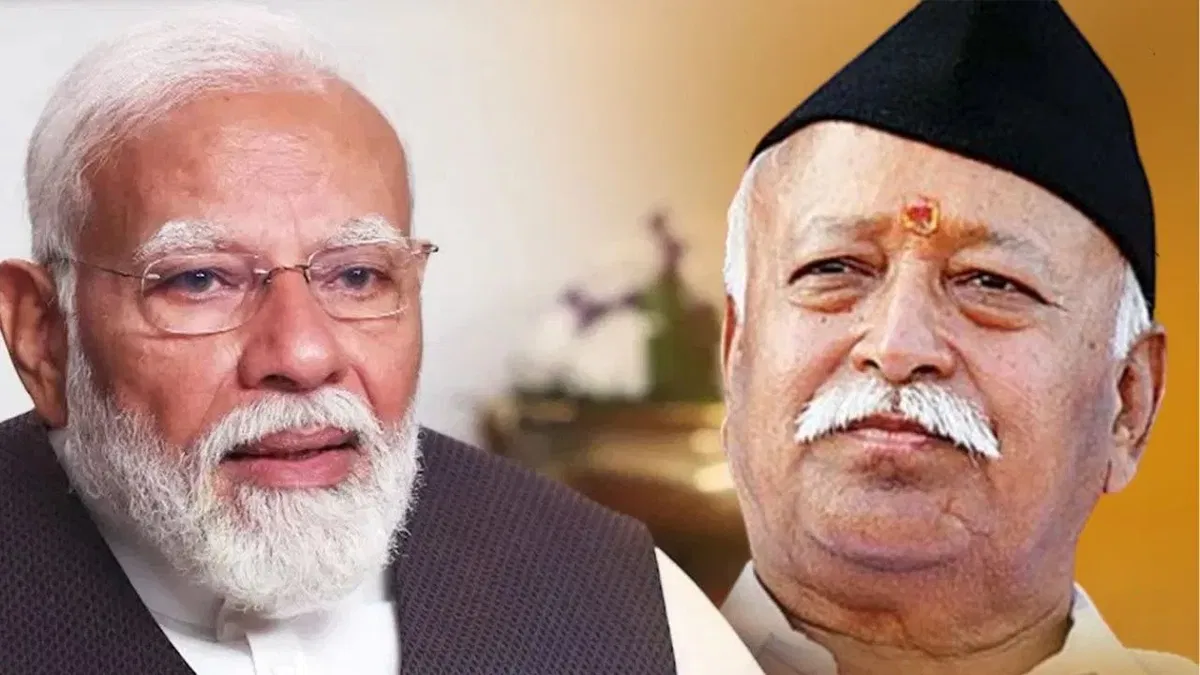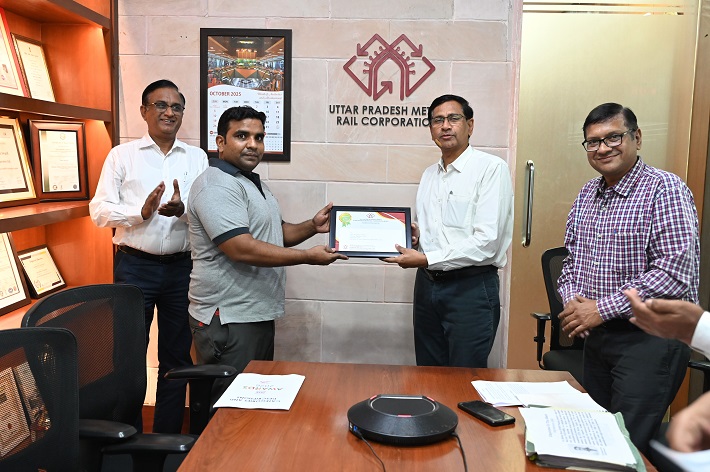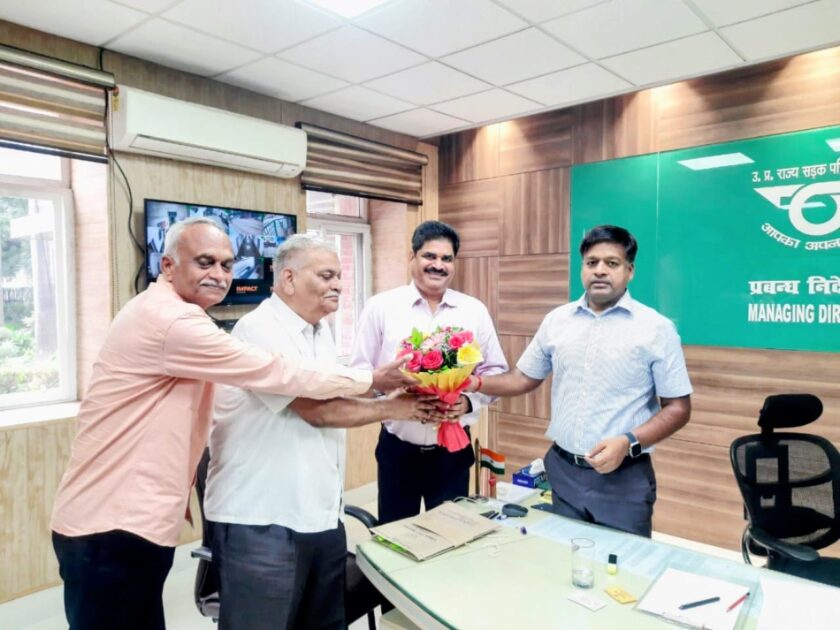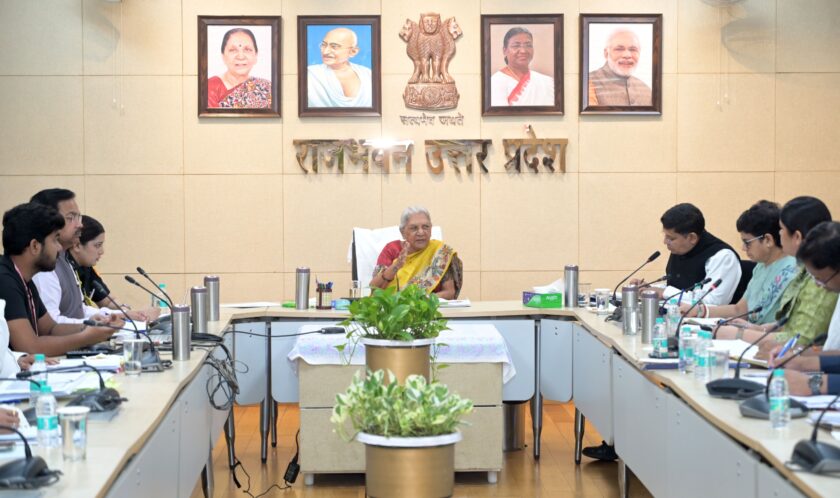Nagpur: Prime Minister Narendra Modi stepped onto the hallowed grounds of the Rashtriya Swayamsevak Sangh (RSS) headquarters in Nagpur, Maharashtra, making history as the first sitting PM to do so. The visit wasn’t just a ceremonial nod—it was a bold statement, dripping with political intrigue, cultural resonance, and ideological heft. With RSS chief Mohan Bhagwat by his side, Modi’s presence at the Smruti Mandir, where he paid floral tributes to RSS founders Keshav Baliram Hedgewar and M.S. Golwalkar, sent ripples through India’s political landscape. Here’s why this moment matters.
A Reunion Under the Banyan Tree
Modi didn’t mince words. In a handwritten note at the Smruti Mandir, he called the RSS “a banyan tree giving shade to the values and culture of the country,” a poetic nod to its sprawling influence. Speaking later at a public event in Wardha, he doubled down: “The RSS has shown us how to blend tradition with modernity, inspiring generations with its selfless service.” This wasn’t just flattery—it was a public love letter to an organization that birthed the BJP, his political home. After whispers of a rift during the 2024 Lok Sabha elections—when the BJP’s tally dipped and some blamed a lukewarm RSS turnout—Modi’s visit felt like a family reunion. “The BJP and RSS are two sides of the same coin,” a senior Sangh official told The Hindu, hinting at a patched-up bond ready to flex its muscle in future polls.
Timing Is Everything
The date wasn’t random. It was Gudi Padwa, the Hindu New Year, and the kickoff to the RSS’s centenary celebrations—a milestone Modi couldn’t ignore. Fresh off laying the foundation stone for the Madhav Netralaya Premium Centre, an RSS-backed eye hospital, he tied the visit to his “Viksit Bharat” dream for 2047. “This is about building a developed India, rooted in our heritage,” he declared in Wardha, flanked by Maharashtra CM Devendra Fadnavis and Deputy CM Eknath Shinde. Political analyst Neerja Choudhury saw it as a masterstroke: “Modi’s aligning the RSS’s 100-year legacy with his own long-term vision. It’s a signal to the cadre—get on board.”
The Ghost of 2024
Behind the smiles, there’s baggage. The 2024 elections left scars—BJP chief J.P. Nadda had once hinted the party didn’t “need” the RSS as much, a comment that stung. The RSS, with its army of swayamsevaks, has long been the BJP’s grassroots engine, powering wins like the recent Haryana and Maharashtra assembly triumphs. Modi’s visit, coupled with his meeting with Bhagwat, suggests a reset. “This is about trust,” said RSS spokesperson Sunil Ambekar. “The PM’s here to ensure we’re all rowing in the same direction—especially with the BJP presidential race heating up.” Nadda’s term ends soon, and Modi’s nod could tip the scales for a Sangh-friendly successor.
Hindutva’s Loud Whisper
The visit screamed Hindutva. At the Smruti Mandir, Modi scribbled praise for the RSS’s “nationalism and service,” a dog whistle to its base. His detour to Deekshabhoomi—where B.R. Ambedkar embraced Buddhism—added a layer of nuance, saluting social justice while staying true to the Sangh’s ethos. “It’s a tightrope walk,” noted historian Ramachandra Guha. “Modi’s selling Hindutva with a modern twist—hospitals, highways, and heritage.” But not everyone’s buying it. CPI(M) leader Sitaram Yechury fired back: “This is subservience to an ideology that threatens our secular fabric. The PM’s bowing to Nagpur, not the Constitution.”

Opposition Smells Blood
The opposition pounced. Congress spokesperson Jairam Ramesh called it “a desperate bid to appease the RSS after electoral setbacks.” Secular critics see a deeper game: blurring the line between state and ideology. “Modi’s turning the PMO into a Sangh outpost,” fumed a Frontline editorial. With India marking 75 years of its Constitution in 2025, the visit could ignite a fierce secularism-versus-nationalism debate, especially as the RSS flexes its centenary muscle.
The World Watches
Globally, Modi’s RSS pilgrimage raises eyebrows. To some, it’s a nationalist flex—think Trump’s MAGA vibes with saffron flair. To others, his Wardha pitch about infrastructure (think Rs. 52,000 crore in projects) softens the edge, painting India as a rising power balancing tradition and tech. “Modi’s playing to both galleries,” said foreign policy expert C. Raja Mohan. “The West might squirm, but they’ll still court him.”
The Road Ahead
As Modi boarded his plane back to Delhi, the message was clear: the RSS isn’t just a backseat driver—it’s riding shotgun. From mobilizing voters to shaping policy, this visit cements the Sangh’s clout in Modi’s India. For supporters, it’s a triumph of unity and vision. For detractors, it’s a red flag. Either way, as Nagpur’s dust settled, one thing was certain—this wasn’t just a visit. It was a vow.






